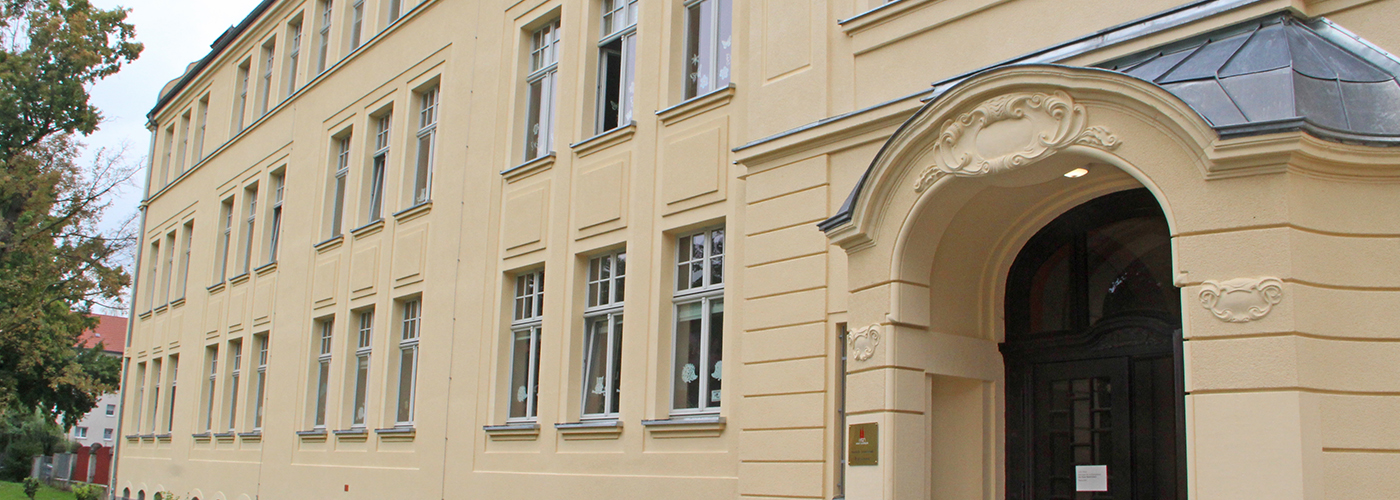Renovation | Primary school Karolinum Altenburg
The façade of Altenburg's Karolinum is as impressive today as it was 100 years ago. The primary school, which is associated with memories and anecdotes for so many locals, is once again a real eye-catcher - thanks to craftsmanship and materials that meet the highest standards.
The high standards of Art Nouveau
The Karolinum, named after Duchess Karoline, the wife of Duke August of Saxe-Gotha-Altenburg, is a school building in the town centre of Altenburg. It was inaugurated in 1909, served temporarily as a military hospital during the Second World War and was subsequently returned to its original purpose as a school.
The primary school is decorated with ornaments typical of the Art Nouveau style: Lush scrollwork, sweeping decorations in the form of floral and animal motifs as well as stucco elements and bosses adorn the façade. However, next to crumbling plaster that was no longer sustainable, these elements could hardly shine. A restoration was necessary.
Product quality, technology & skill
The façade was completely renovated using a mineral plaster system. Old plaster was chipped off, the substrate was cleaned and provided with a non-surface-covering spray coat. The surfaces were then given a base coat of maxit ip 18 ML lightweight lime-cement plaster. The ashlar was also finished with the same material - by creating the recesses with drywall metal rails and applying an additional plaster thickness of the lime-cement-light plaster to the elevations. With higher application thicknesses, only the longer plastering times have to be observed. The finishing plaster was applied with a coloured scratch plaster, maxit ip 213 top, which was not applied by hand on large areas, but with the silo mixing pump (SMP). The silo technology facilitates the application enormously, but it must be ensured that a homogeneous mixture of the material is available to the applicator throughout.
The stucco elements in the façade were reprofiled by a plasterer. With great craftsmanship and the products of the maxit company, he succeeded in bringing the decorative elements back to life. The final touch was given to the object by painting it with maxit silicate paint A 7020.
